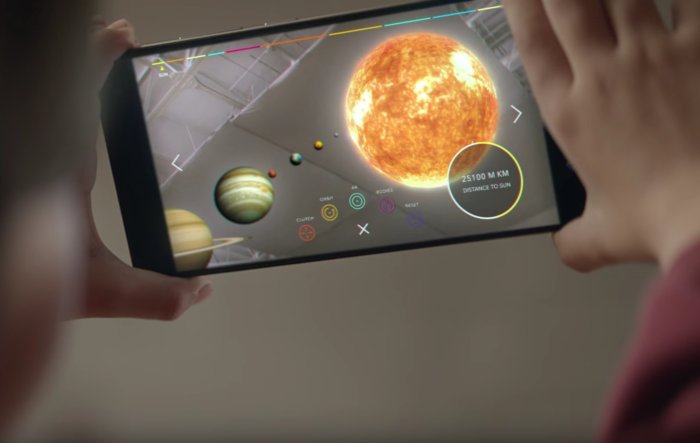copyright by www.cio.com
There’s no question that the demos are cool and that several or all of those products will appear on the market and thrill users with a new experience that blends the real with the virtual. But the future of mixed reality won’t be dominated by Microsoft, Magic Leap, ODG or Meta, but by Google and Apple. Here’s why. The reality about mixed reality Unlike virtual reality, which involves immersion into a fully computer-generated world, mixed reality blends the real with the computer-generated.
There are two kinds of mixed reality:
1. Head-up display (HUD): This kind of mixed reality simply places computer-generated words and images into the user’s field of view without attaching those virtual objects to things or surfaces in the real world. Google Glass offers a HUD, as do fighter-jet displays and next-generation car windshields.
2. Object- or surface-aware augmented reality: Any mixed reality where text or computer-generated objects appear to attach or interact with real-world objects. This can range from simple applications, such as the Sphero BB8 toy robot smartphone app , to complex systems, including Hololens, Magic Leap and others. The most thrilling mixed reality experience involves real-time, 3D mapping of the environment, which enables virtual objects to interact with surfaces and objects in the real world. For example, a computer-generated creature that can stand on a table — or hide behind it.
Here’s the challenge
3D-mapping capability is compute-intensive, meaning it is expensive, power-hungry and heat-generating. So is the real-time rendering of 3D objects. With the richest mixed-reality experience, you need both 3D mapping and image rendering. As a result, products like Hololens and Magic Leap require heavy, bulky headsets and cost a lot of money. (The Hololens developers edition weighs more than 1.25 lbs. and costs at least $3,000 — roughly the same weight and price as four iPhones.) This class of mixed-reality product is exciting, but these systems aren’t for casual use. I’m sorry to break it to you, but only businesses, universities, military operations and very dedicated gamers will buy them in the near future.
And that’s where Google and Apple come in […]
read more – copyright by www.cio.com


copyright by www.cio.com
There’s no question that the demos are cool and that several or all of those products will appear on the market and thrill users with a new experience that blends the real with the virtual. But the future of mixed reality won’t be dominated by Microsoft, Magic Leap, ODG or Meta, but by Google and Apple. Here’s why. The reality about mixed reality Unlike virtual reality, which involves immersion into a fully computer-generated world, mixed reality blends the real with the computer-generated.
There are two kinds of mixed reality:
1. Head-up display (HUD): This kind of mixed reality simply places computer-generated words and images into the user’s field of view without attaching those virtual objects to things or surfaces in the real world. Google Glass offers a HUD, as do fighter-jet displays and next-generation car windshields.
2. Object- or surface-aware augmented reality: Any mixed reality where text or computer-generated objects appear to attach or interact with real-world objects. This can range from simple applications, such as the Sphero BB8 toy robot smartphone app , to complex systems, including Hololens, Magic Leap and others. The most thrilling mixed reality experience involves real-time, 3D mapping of the environment, which enables virtual objects to interact with surfaces and objects in the real world. For example, a computer-generated creature that can stand on a table — or hide behind it.
Here’s the challenge
3D-mapping capability is compute-intensive, meaning it is expensive, power-hungry and heat-generating. So is the real-time rendering of 3D objects. With the richest mixed-reality experience, you need both 3D mapping and image rendering. As a result, products like Hololens and Magic Leap require heavy, bulky headsets and cost a lot of money. (The Hololens developers edition weighs more than 1.25 lbs. and costs at least $3,000 — roughly the same weight and price as four iPhones.) This class of mixed-reality product is exciting, but these systems aren’t for casual use. I’m sorry to break it to you, but only businesses, universities, military operations and very dedicated gamers will buy them in the near future.
And that’s where Google and Apple come in […]
read more – copyright by www.cio.com
Share this: